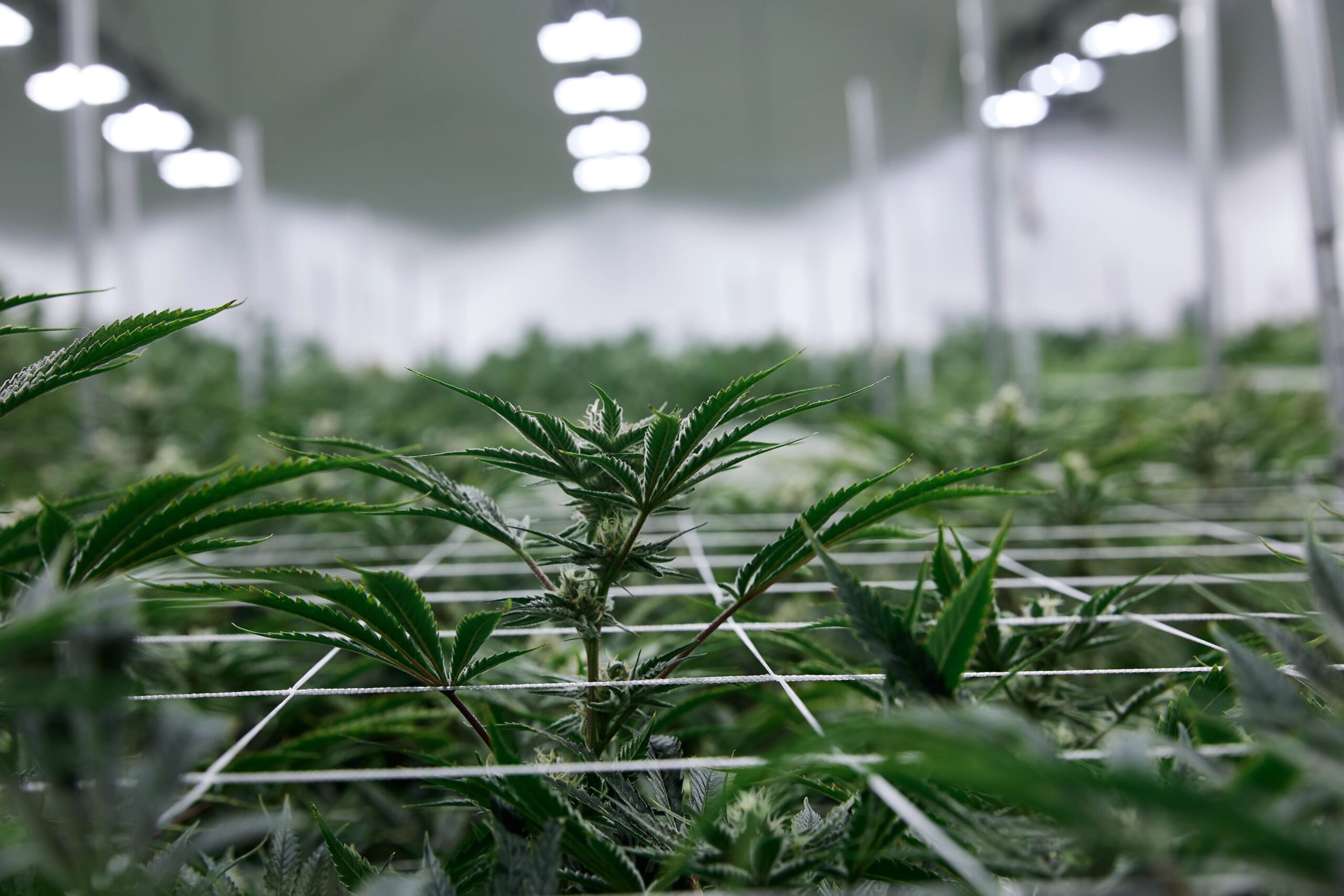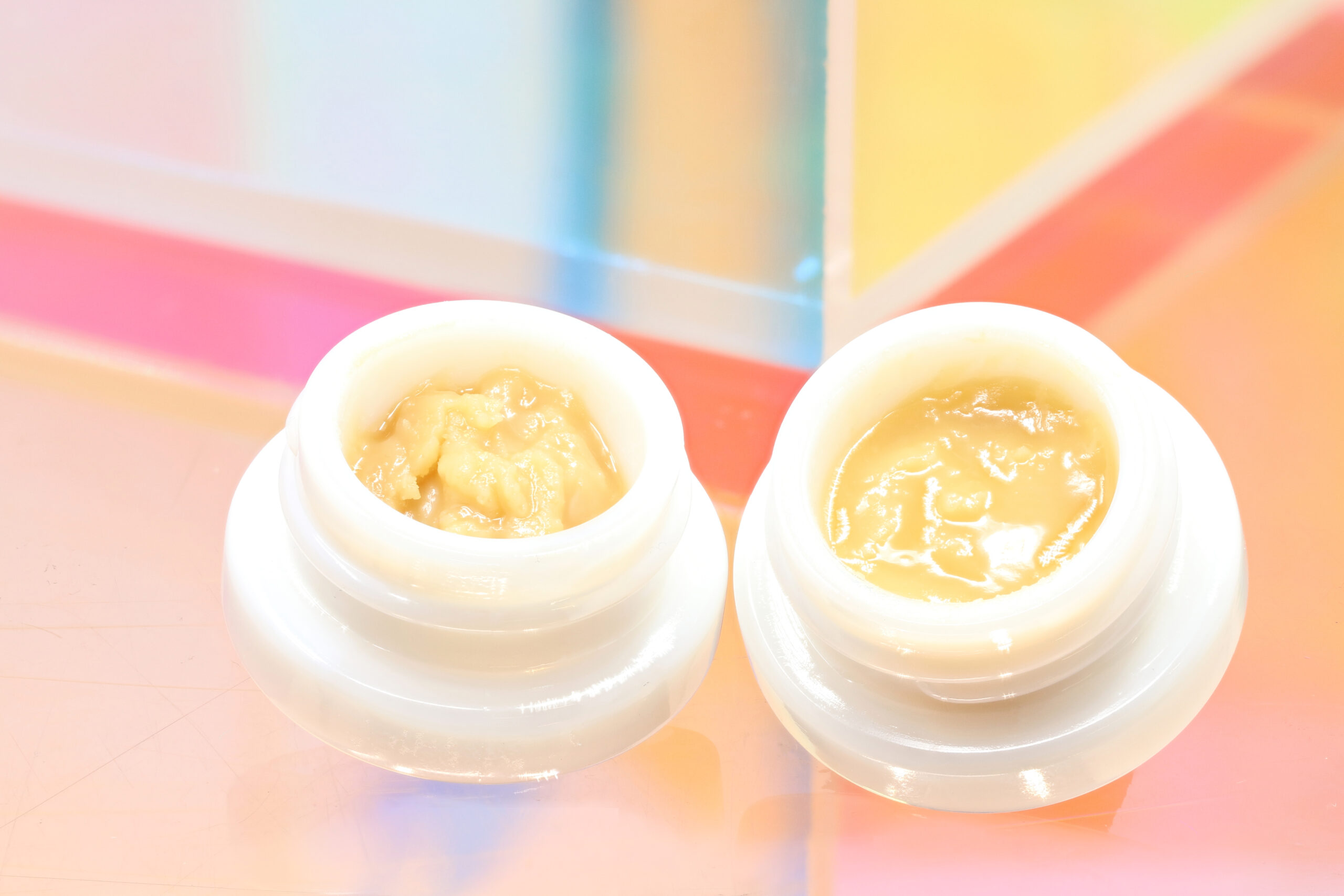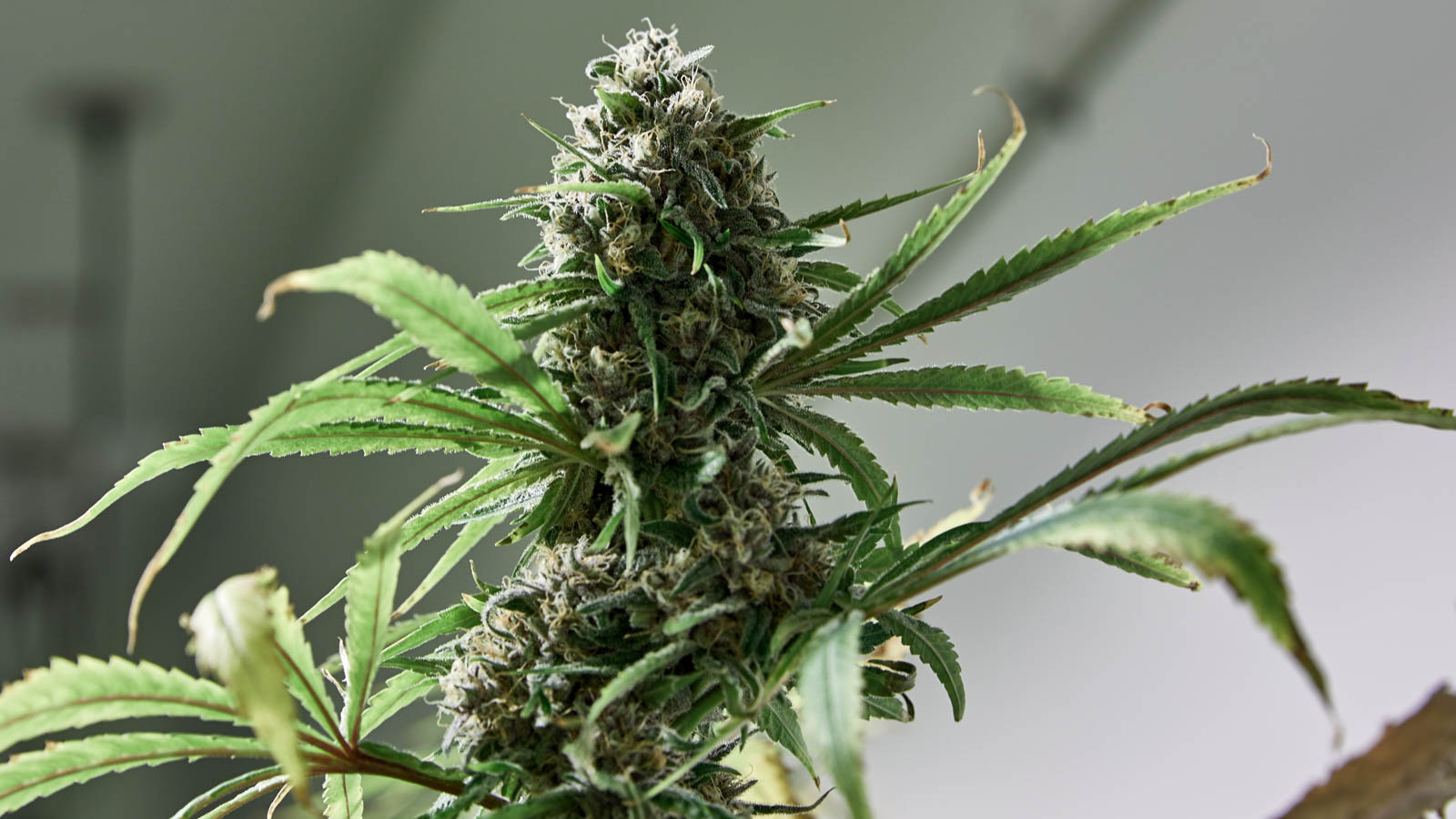Trichomes are tiny but essential parts of the cannabis plant's anatomy. The plant produces many trichomes along the surface of its leaves and flowers, and together, these densely packed crystalline-looking structures produce the frosty coating that cannabis lovers have come to associate with high-quality bud.
Trichomes can be found in many plants, such as tomatoes, and can be thought of as the plant's biological factories. In cannabis, they produce the active compounds we seek for both experiential and therapeutic benefits.
Why are trichomes important?
Physically, trichomes are small, filament-like growths or appendages on the cannabis plant's surface. They can appear all over the plant but are most concentrated on the flowers and upper leaves. While the word “trichome" comes from a Greek root meaning “hair," but to conflate trichomes with other hair-like structures on the plant — like pistils — would be missing a big part of the picture.
 Photo by: Gina Coleman/Weedmaps
Photo by: Gina Coleman/WeedmapsImage lightbox

Trichomes produce a sticky oil where the acidic form of cannabinoids such as THC, CBD, CBG, CBC, CBN, and over a hundred others can be found. This oil is also packed with terpenes, flavonoids, and other active compounds the plant produces. More than 500 chemical compounds are produced by cannabis, many created by trichomes.
These functions are important to the plant and for our unique endogenous cannabinoid system — also known as the endocannabinoid system or “ECS.” The chemical compounds produced by trichomes can interface with our bodies to provide the experiences and therapeutic benefits we seek and associate with cannabis.
Trichomes and cannabis plant protection
Trichomes — and the resin they create — are important to the plant for various evolutionary purposes. While this is an ongoing area of research, the evidence points to trichomes as a vital part of the plant's defense mechanisms. THC provides the plant with UV (ultraviolet) protection, and plants exposed to higher levels of UV tend to produce higher levels of THC. The higher concentration of trichomes found on and around flowers may be the plant's way of protecting its reproductive organs from sun damage.
 Photo by: Gina Coleman/Weedmaps
Photo by: Gina Coleman/WeedmapsImage lightbox

Trichomes also help the plant repel insects and deter plant-eating mammals through their bitter taste and anti-fungal properties present in the terpenes and cannabinoids that are produced by it. Different terpenes found in specific areas of the plant defend against specific pests and animals. For example, the terpenes limonene and alpha-pinene are produced in higher concentrations in flowers, where insects are more likely to pose problems. In contrast, beta-caryophyllene is more concentrated on the lower parts of the plant to deter mammals that are more likely to munch its lower leaves.
Cannabinoids such as THCA and CBGA are toxic to insects as well, and these and other cannabinoids provide antimicrobial protection for the plant, too. Cannabinoids and terpenes offer the plants a complex defense system that's important for plant health and its ongoing survival.
Types of trichomes
Trichomes can be broadly grouped into glandular and non-glandular. On cannabis plants, it's the glandular trichomes that produce resin.
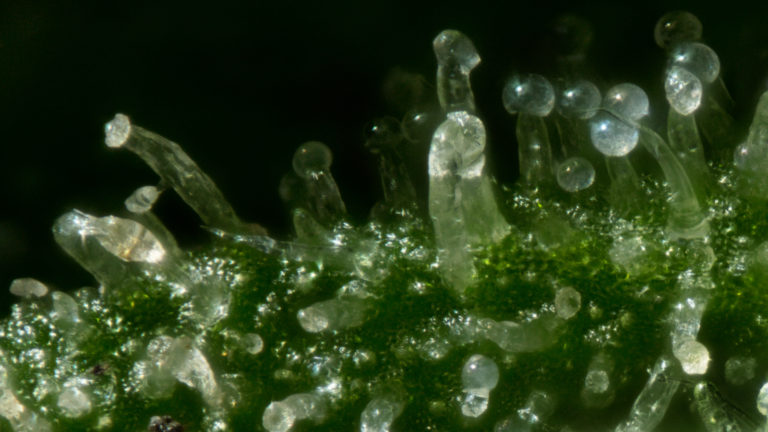 Photo by: Gina Coleman/Weedmaps
Photo by: Gina Coleman/WeedmapsImage lightbox

Cannabis' trichomes are typically broken down into three main types: bulbous, capitate-sessile, and capitate-stalked.
Bulbous trichomes
Bulbous trichomes, which are shaped like tiny bulbs, are evenly distributed throughout the surface of the plant. They are not visible to the human eye without a microscope. They're responsible for the cannabis plant's crystal-like sheen and stickiness of the flower.
Capitate-sessile trichomes
Capitate-sessile trichomes are only visible with a microscope but are more abundant than bulbous trichomes. They have large bulbs with a classic mushroom-like shape. They also have secretory cells at the base, which initiate cannabinoid and terpene biosynthesis. Capitate-sessile are the trichomes found primarily on the underside of the sugar and fan leaves.
New developments in the study of trichomes have uncovered that many sessile-presenting trichomes become capitate-stalked trichomes as the plant matures.
Capitate-stalked trichomes
Capitate-stalked trichomes are the largest and most abundant. They're the only ones visible to the naked eye, which is why consumers are most familiar with them. They're primarily found on the surface of the cannabis flower.
Capitate-stalked trichomes resemble mushrooms with large bulbs at the head of the stalk. The bulbs contain secretory cells at their base, and nutrients are transferred to the trichome head through the multicellular stalk. Before they fully mature, they look identical to sessile trichomes.
Trichomes and flowering
All cannabis plants go through progressive stages in their life cycle, and it's towards the end of this life cycle, during the flowering stage, that trichome production ramps up. The flowering stage is when cannabis enters its reproductive growth phase, and female plants produce the dense and resinous flowers we harvest.
As the flowers mature, they become increasingly covered in the capitate-stalked trichomes prized for cannabinoid and terpene production and are most concentrated on the plant's colas and sugar leaves.
How to grow cannabis that's rich in trichomes
To support optimal trichome production, you'll need to start off with the fundamentals: genetics and environment. Some cultivars are known to produce more trichomes and resin than others, so if you're looking for max trichomes, seek out quality genetics that will support that.
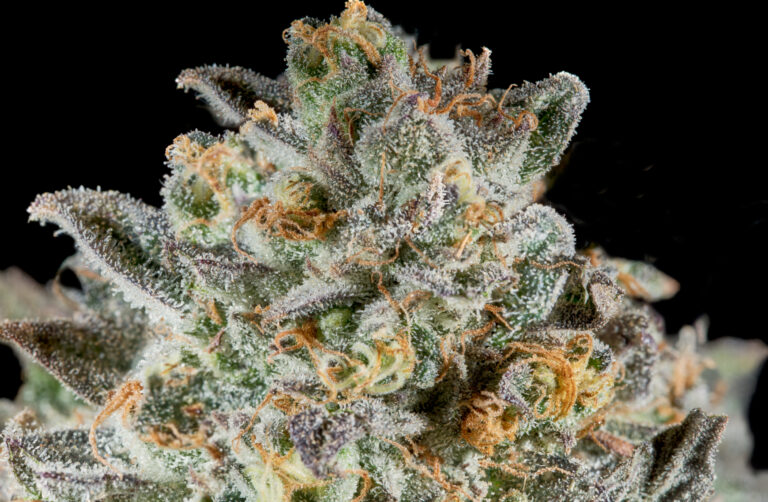 Photo by: Gina Coleman/Weedmaps
Photo by: Gina Coleman/WeedmapsImage lightbox

Genetics on their own, however, can only go so far. Growing cannabis plants requires paying careful attention to a variety of environmental variables, such as:
- Light
- Nutrients
- Humidity and temperature control
- Airflow
- Pest and disease control
Each cultivar has slightly different needs, and with experience, you can dial in environmental variables to get the most out of your genetics.
In addition to these fundamentals, growers may also use additional techniques to coax higher levels of trichome production from their plants. Techniques such as low and high-stress training are often used to increase overall bud production, while high-stress training techniques like super-cropping are specifically used to induce a stress response in the plant to boost trichome production. Some growers will also expose plants to a period of complete darkness right before harvest, again to induce a stress response that is thought to increase trichome and resin production.
How to tell if flower is ready to harvest via trichomes
One way that both home growers and cannabis cultivators determine the optimal time for harvest — when flowers are deemed to be “ripe" — is by the look of the trichomes.
As the plant matures throughout its flowering cycle, so do the trichomes, and as they do, the chemical composition of the resin within them changes and is reflected by their color and appearance. This color change can be hard to see with the naked eye, so ensure you have a magnifying glass handy for inspection. The resin within trichomes goes from clear to milky white and finally appears amber. Young, immature trichomes are clear, whereas mature and peak trichomes are milky.
 Photo by: Gina Coleman/Weedmaps
Photo by: Gina Coleman/WeedmapsImage lightbox

When trichomes reach the amber-hued stage, the concentrations of the most desirable cannabinoids and terpenes may decline. Milky trichomes are thought to contain peak THC levels, offering a more stimulating effect, while amber trichomes are thought to have more CBN, the degraded by-product of THC that offers more sedative effects.
Generally, you can harvest when about half the trichomes are milky and half are amber. That said, some growers may harvest when there are milkier and fewer amber trichomes, more amber and fewer milky trichomes, or anywhere in between. These personal preferences for harvest may depend on the strain they are growing or the effects they are looking for.
FAQ
What are trichomes in cannabis?
Trichomes are tiny structures on the cannabis plant's surface. Glandular trichomes produce cannabinoids such as THC and CBD, terpenes, flavonoids, and other active compounds that provide the experiential and therapeutic benefits we expect from cannabis.
What do trichomes look like when they're ready to harvest?
Many growers determine the best time to harvest based on the look of the trichomes. As they mature, trichomes will change from clear to milky white to amber. Generally, many growers harvest when about half are milky white and half are amber.
Why are they called trichomes?
The word “trichome" comes from the Greek trikhōma, which comes from trikhoun, meaning “to cover with hair," or from thrix, meaning “hair,” and it refers to fine filament-like growths found on the surface of a variety of plants, lichens, and algae.
These small, fine, and densely packed structures may seem like hair, but most trichomes on cannabis are glandular organs that produce cannabinoids.
What's the difference between resin and trichomes?
Resin is produced by small, glandular structures on the cannabis plant's surface called trichomes. The resin produced by trichomes contains the active compounds that provide cannabis with its signature experiential and therapeutic benefits, including cannabinoids (THC, CBD, CBG, CBN, etc.), terpenes, and flavonoids, among many other pharmacologically active chemicals.


